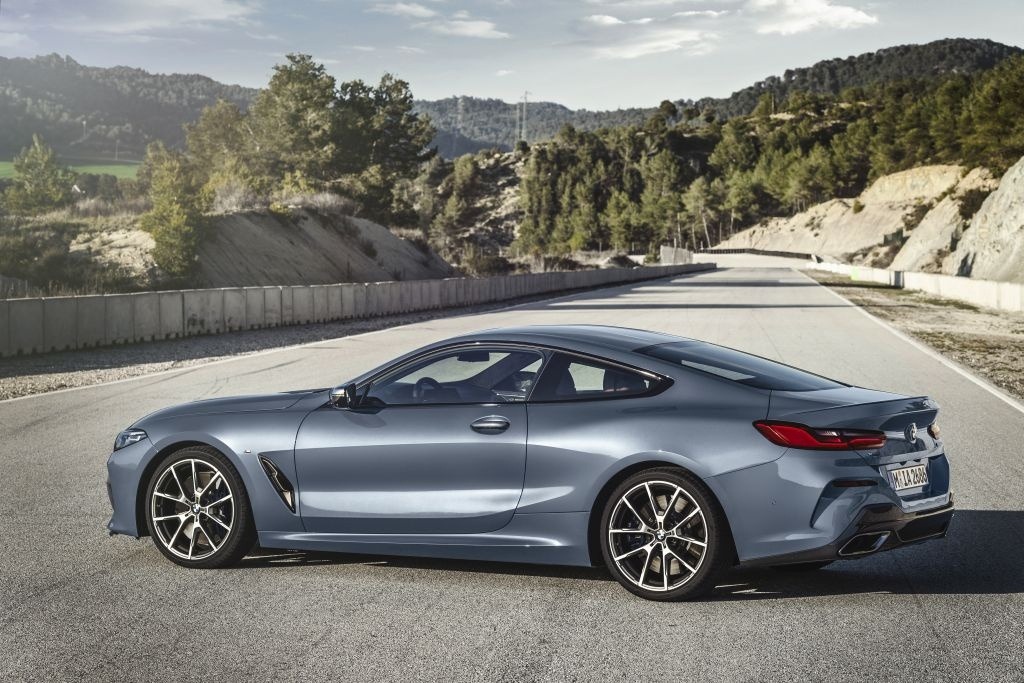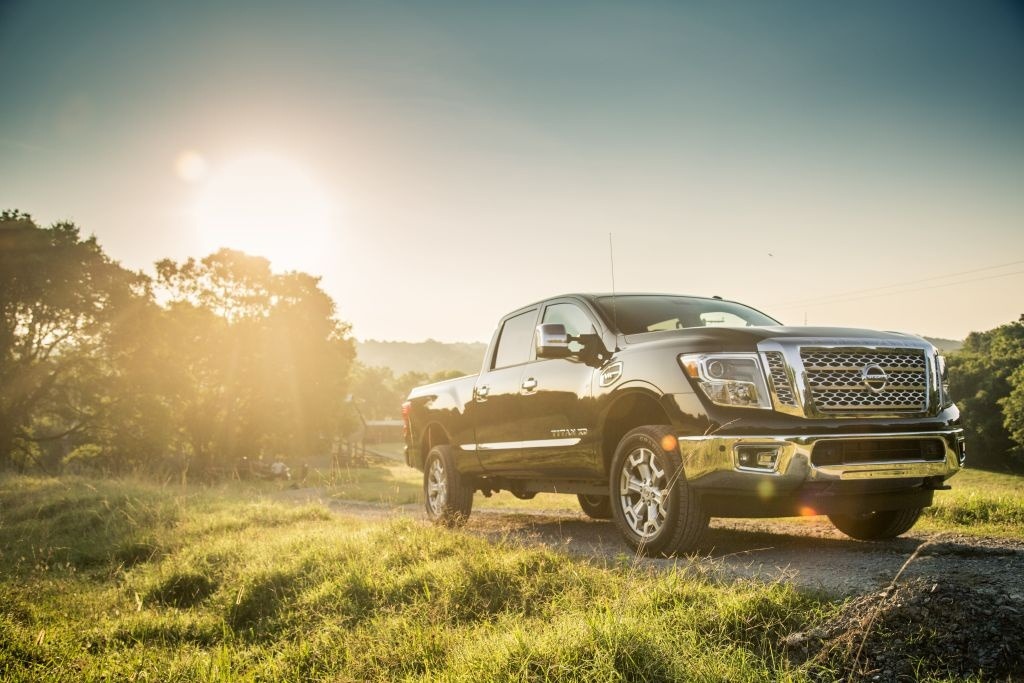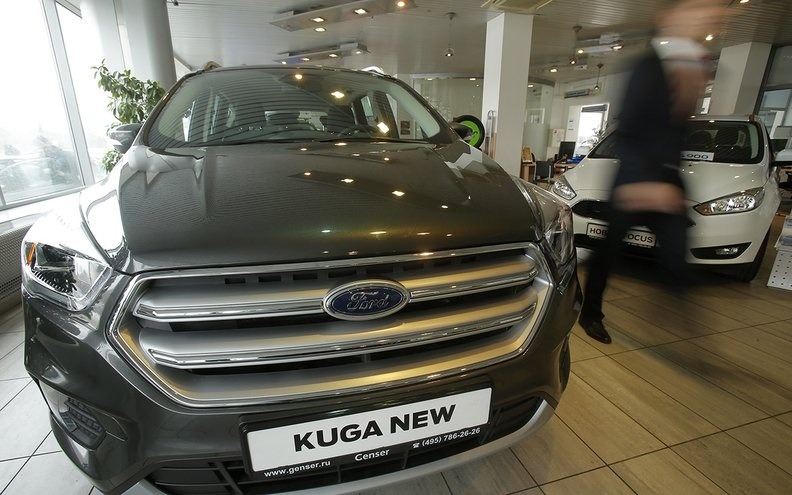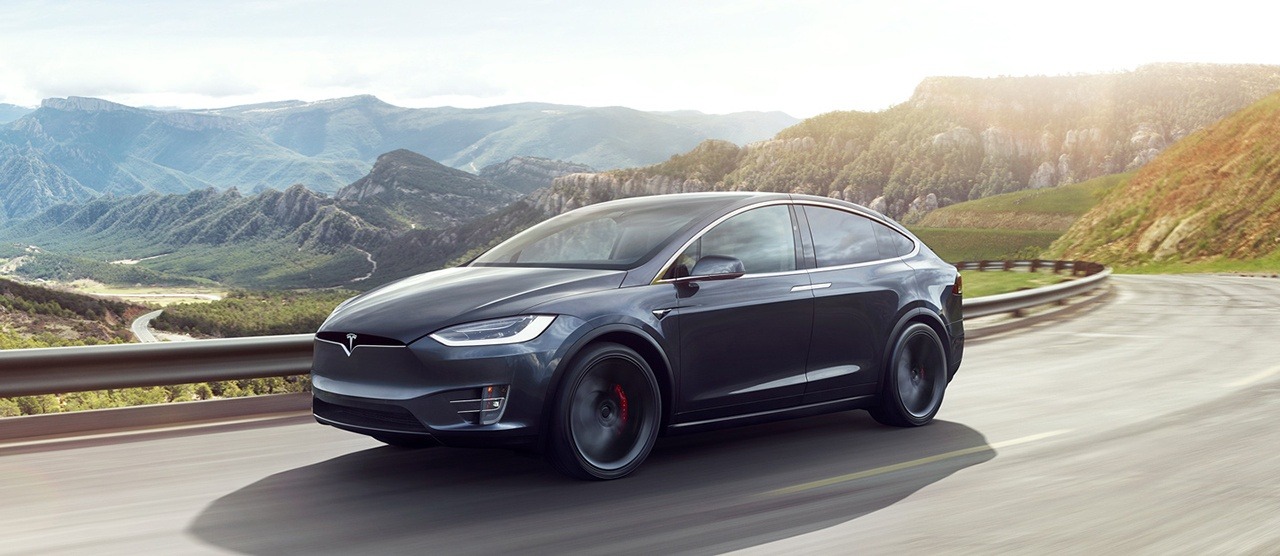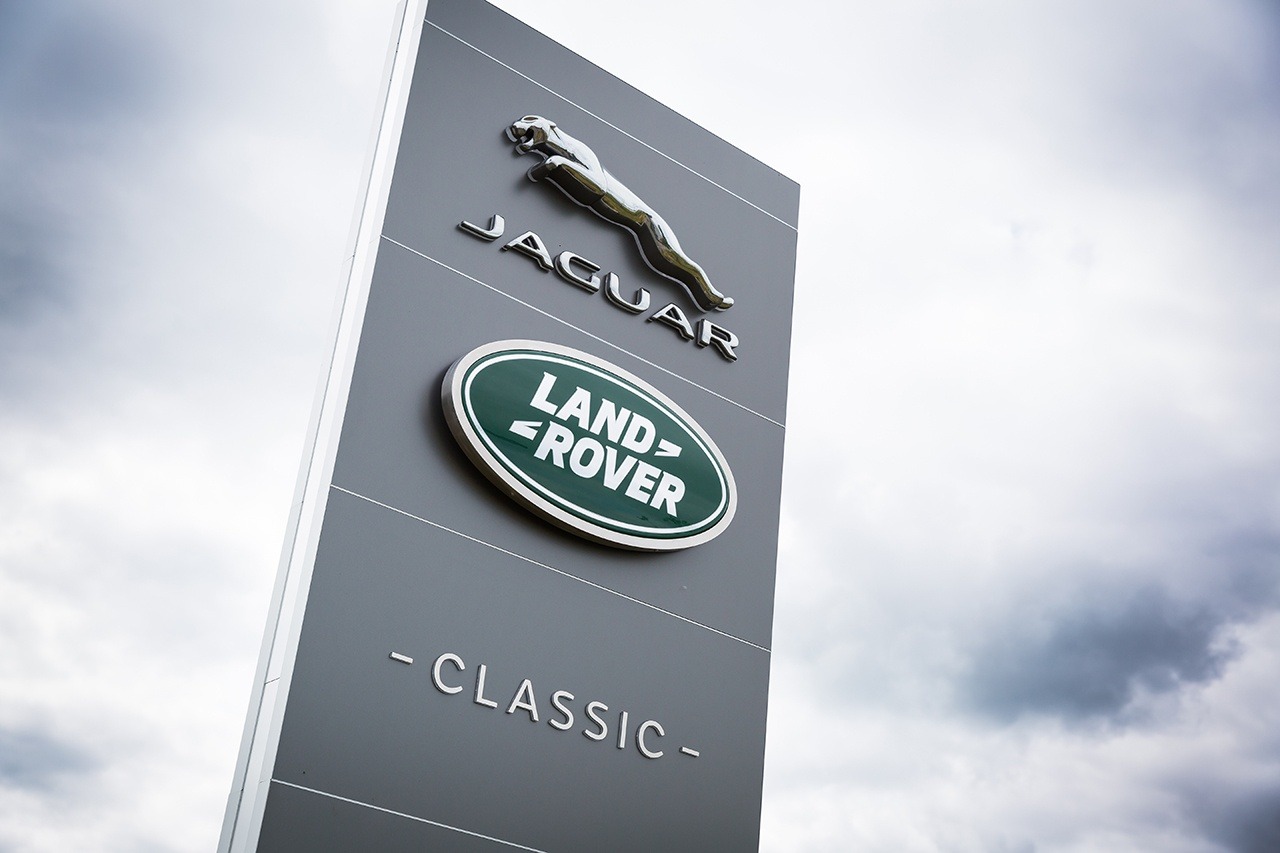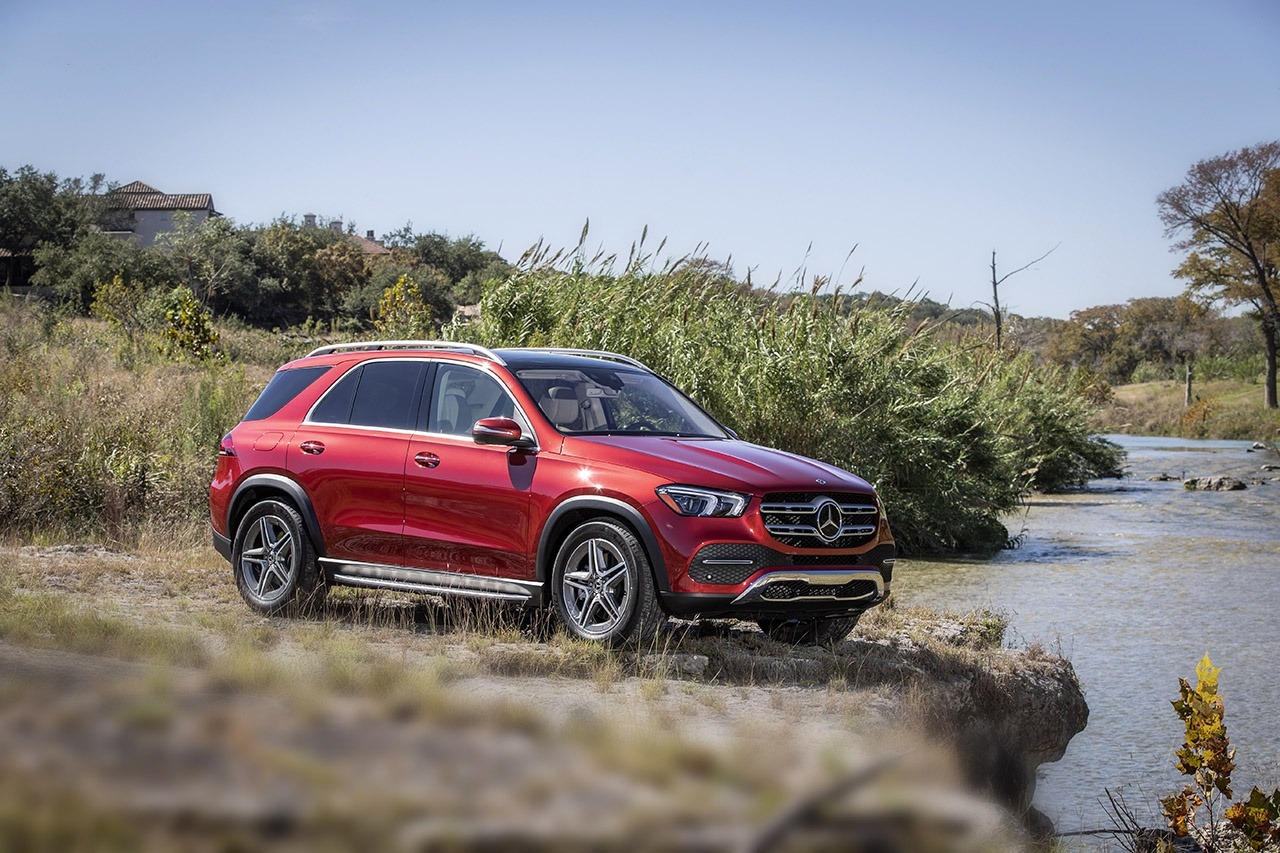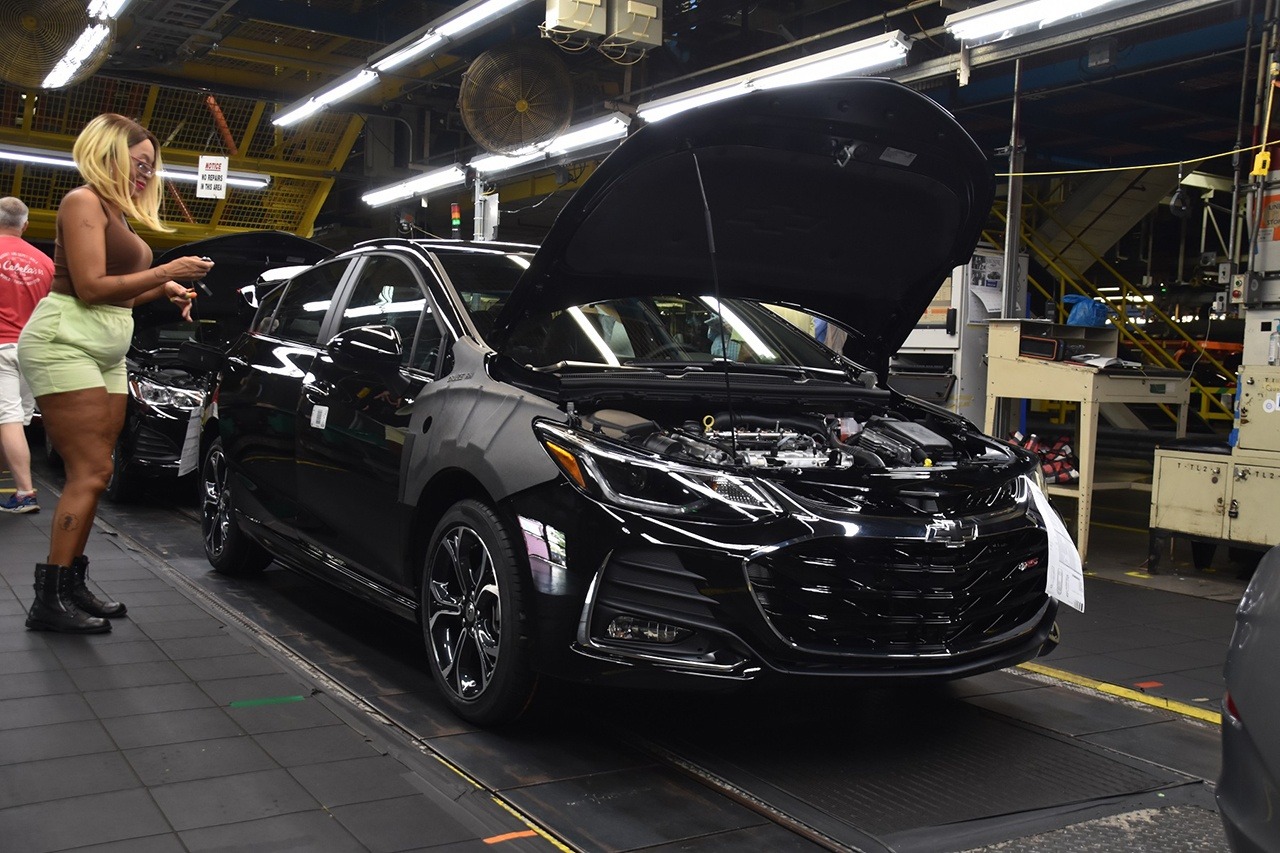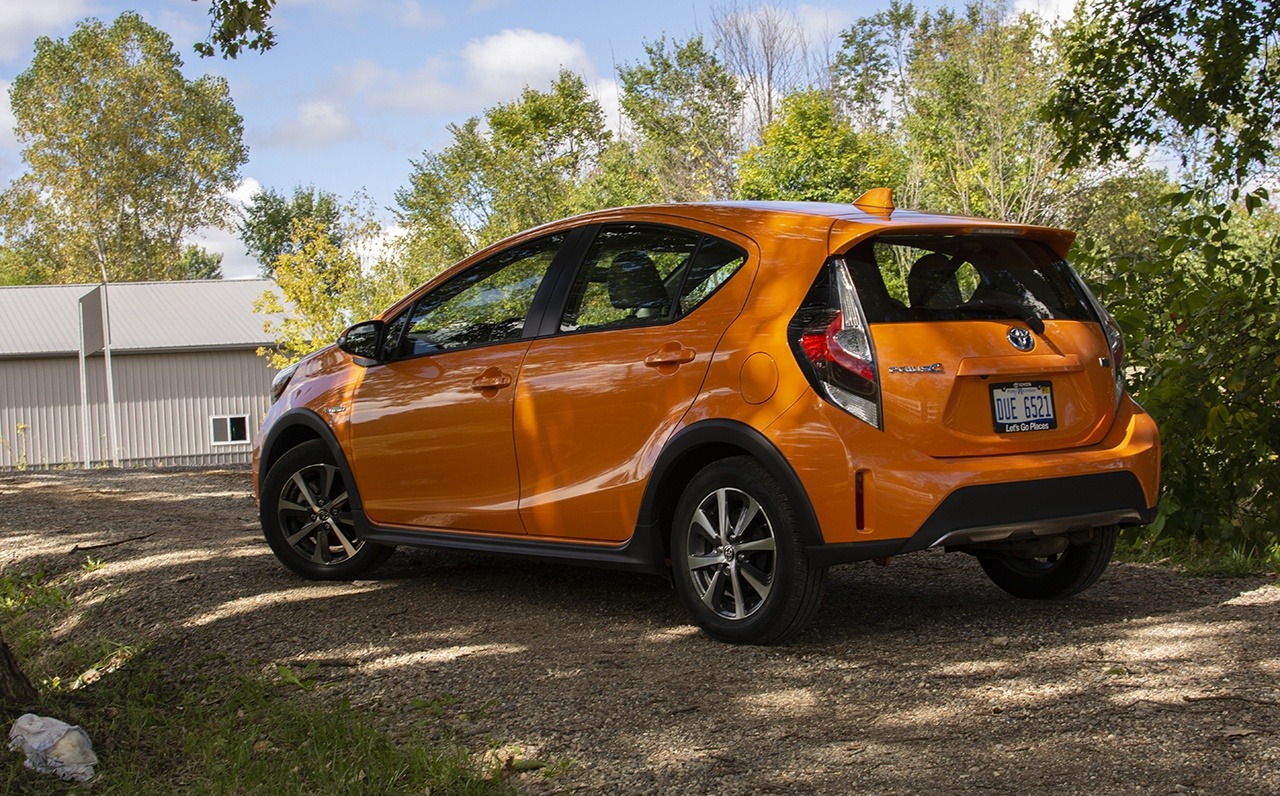Search the Community
Showing results for tags 'cuts'.
-
Cutting models from lineups seems to be the order of the day lately. Automakers like Nissan, General Motors, and Mercedes Benz, are in the process of hatcheting the heck out their lineups. Now comes the news from BMW. BMW has been struggling to make money on vehicles less than €40,000, due to fears of another global recession, a marked slowdown in the automotive sector, and Trump inspired trade wars, BMW is looking to cull options and models from their lineup. Gone will be many convertible variants, including the next Z4, the 2-series, 8-series (coupe and convertible). Also pushing up the daisies will be the 7-series standard wheelbase (Not offered in the US), the 1-series 3-door, the 2-series Gran Tourer, and 3-series GT. Even the BMW X2 could get the scythe. On the electric front, the i3 and i8 will be phased out due to their use of expensive carbon fiber, in place they will get much more conventional EV replacements, including a fully electric X3. As far as Mini goes, Mini's future development is being handled by Great Wall Motors for the Mini three-door and 5-door. The Countryman is based on the X1. Mini's future is shaky as the brand continues to fail to bring up its sales numbers. It also has a great number of variants for a small brand, so expect to see some of those reduced. It seems no brand is safe from the global automotive pull back. View full article
-
Cutting models from lineups seems to be the order of the day lately. Automakers like Nissan, General Motors, and Mercedes Benz, are in the process of hatcheting the heck out their lineups. Now comes the news from BMW. BMW has been struggling to make money on vehicles less than €40,000, due to fears of another global recession, a marked slowdown in the automotive sector, and Trump inspired trade wars, BMW is looking to cull options and models from their lineup. Gone will be many convertible variants, including the next Z4, the 2-series, 8-series (coupe and convertible). Also pushing up the daisies will be the 7-series standard wheelbase (Not offered in the US), the 1-series 3-door, the 2-series Gran Tourer, and 3-series GT. Even the BMW X2 could get the scythe. On the electric front, the i3 and i8 will be phased out due to their use of expensive carbon fiber, in place they will get much more conventional EV replacements, including a fully electric X3. As far as Mini goes, Mini's future development is being handled by Great Wall Motors for the Mini three-door and 5-door. The Countryman is based on the X1. Mini's future is shaky as the brand continues to fail to bring up its sales numbers. It also has a great number of variants for a small brand, so expect to see some of those reduced. It seems no brand is safe from the global automotive pull back.
-
There's one disadvantage to being partially owned by the French, they know how to cut things off when they need to. We reported last week that due to lagging sales and plunging profits, Nissan was readying to layoff 12,500 employees globally, or 9% of their global workforce. It seems that other cuts are on the way as well, though we may not see as much of it here in the U.S. Along with the 9% cut in jobs will be around 10% of its global lineup as well. First to go will be the low-end models in developing markets like India. Their overseas brand Datsun could see the bulk of the cuts, but the US will lose models as well. Expect coupes and hatchbacks to be the first to go, the Versa hatchback for example will not be returning for 2020, replaced by the more crossover-like Kicks. Which coupe might die? The Nissan 370Z, the Nissan GT-R, and the Infiniti Q60 are prime targets. Deliveries of the Infiniti Q60 are down 48.8% as of June. In Sedan-Land, the Maxima fell 30% and the Altima, which is all-new, is down 12.1%. But it isn't just cars that could get kicked to the curb. The Nissan Titan sales are down 22.6%, selling a mere 18,026 copies in the first half of this year. This trails even the slow selling Toyota Tundra by some 36,000 units. The Murano is down 33% year to date. So if you're wondering which models may have their head in the Guillotine, take a look at our Sales Figure Ticker for Nissan for June and put a big red question mark on them. View full article
-
There's one disadvantage to being partially owned by the French, they know how to cut things off when they need to. We reported last week that due to lagging sales and plunging profits, Nissan was readying to layoff 12,500 employees globally, or 9% of their global workforce. It seems that other cuts are on the way as well, though we may not see as much of it here in the U.S. Along with the 9% cut in jobs will be around 10% of its global lineup as well. First to go will be the low-end models in developing markets like India. Their overseas brand Datsun could see the bulk of the cuts, but the US will lose models as well. Expect coupes and hatchbacks to be the first to go, the Versa hatchback for example will not be returning for 2020, replaced by the more crossover-like Kicks. Which coupe might die? The Nissan 370Z, the Nissan GT-R, and the Infiniti Q60 are prime targets. Deliveries of the Infiniti Q60 are down 48.8% as of June. In Sedan-Land, the Maxima fell 30% and the Altima, which is all-new, is down 12.1%. But it isn't just cars that could get kicked to the curb. The Nissan Titan sales are down 22.6%, selling a mere 18,026 copies in the first half of this year. This trails even the slow selling Toyota Tundra by some 36,000 units. The Murano is down 33% year to date. So if you're wondering which models may have their head in the Guillotine, take a look at our Sales Figure Ticker for Nissan for June and put a big red question mark on them.
-
Rumors are swirling that Volkswagen may be cutting most of the Golf lineup from the US market with the next generation of Golf. The standard version of the Golf, e-Golf, Golf SportWagen, and Golf Alltrack would be dropped in the US while the GTI and Golf R continue on. The e-Golf will be replaced by something in the ID lineup. Looking at the sales numbers, it is easy to see why Volkswagen may make this move. Sales of the base Golf in 2018 numbered just 6,642, down 51% from the year prior. GTI and Golf R combined sold more than triple that amount (20,152). The one head-scratcher is the Golf Sportwagon, which sold nearly as many units (14,123) as the GTI (16,684), but if Volkswagen is looking to shed the econo-car image of the Golf and stick with just the hot-hatch image, then dropping the Sportwagen may make sense. As the next generation of Golf hasn't actually been released yet, Volkswagen is declining to comment.
- 14 comments
-
Rumors are swirling that Volkswagen may be cutting most of the Golf lineup from the US market with the next generation of Golf. The standard version of the Golf, e-Golf, Golf SportWagen, and Golf Alltrack would be dropped in the US while the GTI and Golf R continue on. The e-Golf will be replaced by something in the ID lineup. Looking at the sales numbers, it is easy to see why Volkswagen may make this move. Sales of the base Golf in 2018 numbered just 6,642, down 51% from the year prior. GTI and Golf R combined sold more than triple that amount (20,152). The one head-scratcher is the Golf Sportwagon, which sold nearly as many units (14,123) as the GTI (16,684), but if Volkswagen is looking to shed the econo-car image of the Golf and stick with just the hot-hatch image, then dropping the Sportwagen may make sense. As the next generation of Golf hasn't actually been released yet, Volkswagen is declining to comment. View full article
- 14 replies
-
Following a dismal fall in sales in the previous two quarters, Tesla has sacked several dozen employees in stores in Chicago, New York, and Tampa last week according to a report in Bloomberg. These cuts are the latest in a series of cuts to Tesla's retail staff that Tesla had announced earlier in the year. At first, Tesla had announced it would close most of its retail locations and moving to an entirely online retail model. They later changed course and dialed back the reductions with the caveat that some locations would still be closing. Tesla then raised the prices on the more expensive Model 3 trims Most of the cuts came from staff who hold the position of Inside Sales and their managers. Inside sales teams reach out to potential buyers and stimulate interest with test drives.
-
Following a dismal fall in sales in the previous two quarters, Tesla has sacked several dozen employees in stores in Chicago, New York, and Tampa last week according to a report in Bloomberg. These cuts are the latest in a series of cuts to Tesla's retail staff that Tesla had announced earlier in the year. At first, Tesla had announced it would close most of its retail locations and moving to an entirely online retail model. They later changed course and dialed back the reductions with the caveat that some locations would still be closing. Tesla then raised the prices on the more expensive Model 3 trims Most of the cuts came from staff who hold the position of Inside Sales and their managers. Inside sales teams reach out to potential buyers and stimulate interest with test drives. View full article
-
Ford will exit Russia's passenger car market and focus solely on the light commercial vehicle market says a report from Bloomberg. Alligned with those moves, Ford will cease production in the country at two vehicle assembly plants. Those plants will close by the end of June 2019. Ford produces the Focus, Mondeo, Fiesta, and Ecosport in Russia. These cuts will cause significant job losses for Russia. This move comes after Ford announced as many as 6,000 job cuts in Germany and the UK and cut jobs at a transmission factory in France. Honda, Nissan, and BMW have all recently announced cuts or closures in European operations. Related:
-
Ford will exit Russia's passenger car market and focus solely on the light commercial vehicle market says a report from Bloomberg. Alligned with those moves, Ford will cease production in the country at two vehicle assembly plants. Those plants will close by the end of June 2019. Ford produces the Focus, Mondeo, Fiesta, and Ecosport in Russia. These cuts will cause significant job losses for Russia. This move comes after Ford announced as many as 6,000 job cuts in Germany and the UK and cut jobs at a transmission factory in France. Honda, Nissan, and BMW have all recently announced cuts or closures in European operations. Related: View full article
-
Tesla announced yesterday that it will reduce production hours for the Model S and Model X. This follows news of Tesla cutting seven percent of their workforce and dropping 75D variants of the S and X. “We recently announced that we are no longer taking orders for the 75 kWh version of Model S and X in order to streamline production and provide even more differentiation with Model 3. As a result of this change and because of improving efficiencies in our production lines, we have reduced Model S and X production hours accordingly,” Tesla said in a statement to Bloomberg. According to unnamed current and former employees, Tesla has set "substantially lower daily production targets" on the Model S and X. Tesla declined to comment when asked about the production targets. This is causing concern to grow about the demand for Tesla's more expensive (and profitable) vehicles, as it gears up to get more Model 3s out the door. Source: Bloomberg Hat tip to @balthazar for notifying us about this story. View full article
-
Tesla announced yesterday that it will reduce production hours for the Model S and Model X. This follows news of Tesla cutting seven percent of their workforce and dropping 75D variants of the S and X. “We recently announced that we are no longer taking orders for the 75 kWh version of Model S and X in order to streamline production and provide even more differentiation with Model 3. As a result of this change and because of improving efficiencies in our production lines, we have reduced Model S and X production hours accordingly,” Tesla said in a statement to Bloomberg. According to unnamed current and former employees, Tesla has set "substantially lower daily production targets" on the Model S and X. Tesla declined to comment when asked about the production targets. This is causing concern to grow about the demand for Tesla's more expensive (and profitable) vehicles, as it gears up to get more Model 3s out the door. Source: Bloomberg Hat tip to @balthazar for notifying us about this story.
-
Ford wasn't the only automaker to announce cuts this week. On Thursday, Jaguar Land Rover announced they would cutting 10 percent of their global workforce (4,500 jobs) as part of a 2.5 billion pound (about $3.2 billion) effort to reduce costs and improve cash flow through 2020. As we reported last month, JLR got hit with a triple whammy of bad news; declining sales in China, falling demand for diesel vehicles, and the looming threat of Brexit. The company reported that retail sales fell 4.6 percent in 2018, mostly due to the uncertainty surrounding Brexit. That pales in comparison to the 22 percent drop in sales seen in the Chinese market - due mostly in part to the trade war. JLR CEO Dr. Ralph Speth said the cuts were a response to “multiple geopolitical and regulatory disruptions as well as technology challenges facing the automotive industry.” The company said the cuts will focus on those in design, engineering, supervisory, and senior management. No cuts are expected to hit those in production. Source: Bloomberg, Jaguar Land Rover JAGUAR LAND ROVER IMPLEMENTS NEXT PHASE OF TRANSFORMATION PROGRAMME Jaguar Land Rover, the UK’s largest vehicle manufacturer, today outlined the next phase of ‘Charge and Accelerate’, the company’s ongoing transformation programme to deliver £2.5bn in cost reductions and cashflow improvements over 18 months as well as long-term strategic operating efficiencies. Next phase of major transformation plan to lay foundations for long-term sustainable profitable growth Creation of leaner, more resilient organisation; reducing global workforce by around 4,500 people. This is in addition to 1,500 people who left the business in 2018 Further investment into electrification with Electric Drive Units to be produced at Wolverhampton Engine Manufacturing Centre and new Battery Assembly Centre to be established at Hams Hall, North Warwickshire CEO Prof. Dr. Ralf Speth: “Decisive action will help deliver resilient long-term growth as Jaguar Land Rover implements cost and profit improvements. This will safeguard our future and enable vital ongoing investment into Autonomous, Connected, Electric Jaguar Land Rover, the UK’s largest vehicle manufacturer, today outlined the next phase of ‘Charge and Accelerate’, the company’s ongoing transformation programme to deliver £2.5bn in cost reductions and cashflow improvements over 18 months as well as long-term strategic operating efficiencies. Jaguar Land Rover is expanding a business-wide organisation review aimed at reducing the size of its global workforce by around 4,500 people. This is in addition to the 1,500 who left the company during 2018. The next phase of this transformation programme will begin with a voluntary redundancy programme in the UK. This strategic review will create a leaner, more resilient organisation with a flatter management structure. We are taking decisive action to help deliver long-term growth, in the face of multiple geopolitical and regulatory disruptions as well as technology challenges facing the automotive industry. The ‘Charge and Accelerate’ programme combines efficiency measures with targeted investment, safeguarding our future and ensuring that we maximise the opportunities created by growing demand for Autonomous, Connected, Electric and Shared technologies. PROF. DR. RALF SPETH CHIEF EXECUTIVE OFFICER OF JAGUAR LAND ROVER So far, the ‘Charge and Accelerate’ programme has identified over £1bn of improvements, with more than £500mn already realised in 2018. The savings and improvements achieved will enable Jaguar Land Rover to fund vital investments into technology to safeguard its future. These investments include today’s announcement that, from later this year, next-generation Electric Drive Units (EDU) will be produced at the company’s Engine Manufacturing Centre in Wolverhampton. These EDUs will be powered by batteries assembled at a new Jaguar Land Rover Battery Assembly Centre located at Hams Hall, North Warwickshire, reinforcing the company’s commitment to the West Midlands and the UK. The Battery Assembly Centre will be one of the largest of its kind in the UK, using new production techniques and technologies to manufacture battery packs for future Jaguar and Land Rover vehicles. The latest investments and the transformation measures aim to build on unprecedented growth achieved by Jaguar Land Rover over the past decade, enabling the company to launch today’s range of award-winning Jaguar and Land Rover vehicles. In the last year alone, the company’s global product portfolio has expanded to include the all-electric Jaguar I-PACE, the Range Rover and Range Rover Sport with PHEV derivatives and, most recently, the new Range Rover Evoque, also with next-generation hybrid technology. In 2018, the company continued its global expansion with the opening of its latest vehicle manufacturing plant in Slovakia as well as investment into specialist engineering hubs in the Republic of Ireland, Hungary and Manchester, UK. In the same year, Jaguar Land Rover also confirmed plans to invest in its Solihull plant to support the introduction of the next generation Range Rover and Range Rover Sport. The next chapter in the story of the Jaguar and Land Rover brands will be the most exciting - and challenging - in our history. Revealing the iconic Defender, investing in cleaner, smarter, more desirable cars and electrifying our facilities to manufacture a future range of British-built electric vehicles will all form part of building a globally competitive and flourishing company. PROF. DR. RALF SPETH CHIEF EXECUTIVE OFFICER OF JAGUAR LAND ROVER View full article
- 8 replies
-
- cuts
- jaguar land rover
-
(and 1 more)
Tagged with:
-

Jaguar Land Rover Unveils their Cuts Totaling 2.5 Billion Pounds
William Maley posted an article in Jaguar
Ford wasn't the only automaker to announce cuts this week. On Thursday, Jaguar Land Rover announced they would cutting 10 percent of their global workforce (4,500 jobs) as part of a 2.5 billion pound (about $3.2 billion) effort to reduce costs and improve cash flow through 2020. As we reported last month, JLR got hit with a triple whammy of bad news; declining sales in China, falling demand for diesel vehicles, and the looming threat of Brexit. The company reported that retail sales fell 4.6 percent in 2018, mostly due to the uncertainty surrounding Brexit. That pales in comparison to the 22 percent drop in sales seen in the Chinese market - due mostly in part to the trade war. JLR CEO Dr. Ralph Speth said the cuts were a response to “multiple geopolitical and regulatory disruptions as well as technology challenges facing the automotive industry.” The company said the cuts will focus on those in design, engineering, supervisory, and senior management. No cuts are expected to hit those in production. Source: Bloomberg, Jaguar Land Rover JAGUAR LAND ROVER IMPLEMENTS NEXT PHASE OF TRANSFORMATION PROGRAMME Jaguar Land Rover, the UK’s largest vehicle manufacturer, today outlined the next phase of ‘Charge and Accelerate’, the company’s ongoing transformation programme to deliver £2.5bn in cost reductions and cashflow improvements over 18 months as well as long-term strategic operating efficiencies. Next phase of major transformation plan to lay foundations for long-term sustainable profitable growth Creation of leaner, more resilient organisation; reducing global workforce by around 4,500 people. This is in addition to 1,500 people who left the business in 2018 Further investment into electrification with Electric Drive Units to be produced at Wolverhampton Engine Manufacturing Centre and new Battery Assembly Centre to be established at Hams Hall, North Warwickshire CEO Prof. Dr. Ralf Speth: “Decisive action will help deliver resilient long-term growth as Jaguar Land Rover implements cost and profit improvements. This will safeguard our future and enable vital ongoing investment into Autonomous, Connected, Electric Jaguar Land Rover, the UK’s largest vehicle manufacturer, today outlined the next phase of ‘Charge and Accelerate’, the company’s ongoing transformation programme to deliver £2.5bn in cost reductions and cashflow improvements over 18 months as well as long-term strategic operating efficiencies. Jaguar Land Rover is expanding a business-wide organisation review aimed at reducing the size of its global workforce by around 4,500 people. This is in addition to the 1,500 who left the company during 2018. The next phase of this transformation programme will begin with a voluntary redundancy programme in the UK. This strategic review will create a leaner, more resilient organisation with a flatter management structure. We are taking decisive action to help deliver long-term growth, in the face of multiple geopolitical and regulatory disruptions as well as technology challenges facing the automotive industry. The ‘Charge and Accelerate’ programme combines efficiency measures with targeted investment, safeguarding our future and ensuring that we maximise the opportunities created by growing demand for Autonomous, Connected, Electric and Shared technologies. PROF. DR. RALF SPETH CHIEF EXECUTIVE OFFICER OF JAGUAR LAND ROVER So far, the ‘Charge and Accelerate’ programme has identified over £1bn of improvements, with more than £500mn already realised in 2018. The savings and improvements achieved will enable Jaguar Land Rover to fund vital investments into technology to safeguard its future. These investments include today’s announcement that, from later this year, next-generation Electric Drive Units (EDU) will be produced at the company’s Engine Manufacturing Centre in Wolverhampton. These EDUs will be powered by batteries assembled at a new Jaguar Land Rover Battery Assembly Centre located at Hams Hall, North Warwickshire, reinforcing the company’s commitment to the West Midlands and the UK. The Battery Assembly Centre will be one of the largest of its kind in the UK, using new production techniques and technologies to manufacture battery packs for future Jaguar and Land Rover vehicles. The latest investments and the transformation measures aim to build on unprecedented growth achieved by Jaguar Land Rover over the past decade, enabling the company to launch today’s range of award-winning Jaguar and Land Rover vehicles. In the last year alone, the company’s global product portfolio has expanded to include the all-electric Jaguar I-PACE, the Range Rover and Range Rover Sport with PHEV derivatives and, most recently, the new Range Rover Evoque, also with next-generation hybrid technology. In 2018, the company continued its global expansion with the opening of its latest vehicle manufacturing plant in Slovakia as well as investment into specialist engineering hubs in the Republic of Ireland, Hungary and Manchester, UK. In the same year, Jaguar Land Rover also confirmed plans to invest in its Solihull plant to support the introduction of the next generation Range Rover and Range Rover Sport. The next chapter in the story of the Jaguar and Land Rover brands will be the most exciting - and challenging - in our history. Revealing the iconic Defender, investing in cleaner, smarter, more desirable cars and electrifying our facilities to manufacture a future range of British-built electric vehicles will all form part of building a globally competitive and flourishing company. PROF. DR. RALF SPETH CHIEF EXECUTIVE OFFICER OF JAGUAR LAND ROVER- 8 comments
-
- cuts
- jaguar land rover
-
(and 1 more)
Tagged with:
-
This past year hasn't been good for Jaguar Land Rover. A triple whammy of sales dropping in China, demand for diesel vehicles falling, and the looming threat of Brexit has seen the company report a 90 million pound (about $113,550,300) loss in the third-quarter. S&P Global Ratings recently cut their long-term rating into JLR's parent company, Tata Motors into Junk Status. Because of this, Jaguar Land Rover will be detailing a three-year cost-cutting plan next month. Tata announced the plan back in October that would save 2.5 billion pounds (about $3.2 billion) within the first 18 months. There would be job cuts, but Tata did not say how many. The Financial Times reported this week that JLR is planning to cut 5,000 of its 40,000 workforce in the U.K.- this according to sources. “It’s do or die at the moment,” Robin Zhu, an analyst from Bernstein said. “JLR has been seriously mismanaged in recent years, with cost runaways, products disappointing in the market, and hedging issues costing it billions." “Jaguar Land Rover notes media speculation about the potential impact of its ongoing charge and accelerate transformation programmes. As announced when we published our second-quarter results, these programmes aim to deliver £2.5bn of cost, cash and profit improvements over the next two years. Jaguar Land Rover does not comment on rumours concerning any part of these plans,” JLR said in a statement to The Guardian. Other parts of the plan are said to include a reduction in models and selling off various assets. But Evercore ISI, an investment advisory frim said JLR needs to do more than cut costs. "The company needs to consider whether it’s spreading itself too wide and whether competing with the Germans in the tough premium sedan segment is a viable strategy," it wrote in a note to investors this week. Source: Financial Times (Subscription Required) via The Guardian, Automotive News (Subscription Required) View full article
- 16 replies
-
This past year hasn't been good for Jaguar Land Rover. A triple whammy of sales dropping in China, demand for diesel vehicles falling, and the looming threat of Brexit has seen the company report a 90 million pound (about $113,550,300) loss in the third-quarter. S&P Global Ratings recently cut their long-term rating into JLR's parent company, Tata Motors into Junk Status. Because of this, Jaguar Land Rover will be detailing a three-year cost-cutting plan next month. Tata announced the plan back in October that would save 2.5 billion pounds (about $3.2 billion) within the first 18 months. There would be job cuts, but Tata did not say how many. The Financial Times reported this week that JLR is planning to cut 5,000 of its 40,000 workforce in the U.K.- this according to sources. “It’s do or die at the moment,” Robin Zhu, an analyst from Bernstein said. “JLR has been seriously mismanaged in recent years, with cost runaways, products disappointing in the market, and hedging issues costing it billions." “Jaguar Land Rover notes media speculation about the potential impact of its ongoing charge and accelerate transformation programmes. As announced when we published our second-quarter results, these programmes aim to deliver £2.5bn of cost, cash and profit improvements over the next two years. Jaguar Land Rover does not comment on rumours concerning any part of these plans,” JLR said in a statement to The Guardian. Other parts of the plan are said to include a reduction in models and selling off various assets. But Evercore ISI, an investment advisory frim said JLR needs to do more than cut costs. "The company needs to consider whether it’s spreading itself too wide and whether competing with the Germans in the tough premium sedan segment is a viable strategy," it wrote in a note to investors this week. Source: Financial Times (Subscription Required) via The Guardian, Automotive News (Subscription Required)
- 16 comments
-

Rumorpile: China May Reduce Tariffs On U.S.-Made Cars
William Maley posted an article in Automotive Industry
The Chinese government is considering a proposal to reduce tariffs on U.S.-Built vehicles from the current 40 percent back down to the 15 percent before the trade war broke out between it and the U.S. Sources tell Bloomberg a proposal has been submitted to the cabinet to be reviewed in the coming days. This proposal stems from a trade summit in Buenos Aires where U.S. President Donald Trump and Chinese President Xi Jinping agreed to a 90-day truce on the trade war earlier this month. After the meeting, Trump tweeted out that "China agreed to “reduce and remove” tariffs on imported American-made cars, something China did not confirm at the time." Shares of various automakers including Diamler, Ford, and Tesla rose on the news. The trade war between the U.S. and China has taken a toll on automakers. Both BMW and Dimaler have warned of lower profits as tariffs have forced them to raise prices in China. Others such as Volvo and Ford have made changes to production and vehicle plans. China's Finance Ministry didn't respond to Bloomberg's request for a comment. Source: Bloomberg- 9 comments
-
- automobiles
- cars
- (and 6 more)
-
The Chinese government is considering a proposal to reduce tariffs on U.S.-Built vehicles from the current 40 percent back down to the 15 percent before the trade war broke out between it and the U.S. Sources tell Bloomberg a proposal has been submitted to the cabinet to be reviewed in the coming days. This proposal stems from a trade summit in Buenos Aires where U.S. President Donald Trump and Chinese President Xi Jinping agreed to a 90-day truce on the trade war earlier this month. After the meeting, Trump tweeted out that "China agreed to “reduce and remove” tariffs on imported American-made cars, something China did not confirm at the time." Shares of various automakers including Diamler, Ford, and Tesla rose on the news. The trade war between the U.S. and China has taken a toll on automakers. Both BMW and Dimaler have warned of lower profits as tariffs have forced them to raise prices in China. Others such as Volvo and Ford have made changes to production and vehicle plans. China's Finance Ministry didn't respond to Bloomberg's request for a comment. Source: Bloomberg View full article
- 9 replies
-
- automobiles
- cars
- (and 6 more)
-
This morning, General Motors announced an overhaul of its operations in 2019 which will involve cutting more than 10,000 workers and possibly closing five plants by the end of the year. GM said the cuts should boost cash flow by six billion by the end of 2020. “The actions we are taking today continue our transformation to be highly agile, resilient and profitable, while giving us the flexibility to invest in the future. We recognize the need to stay in front of changing market conditions and customer preferences to position our company for long-term success,” said GM Chairman and CEO Mary Barra in a statement. The plants up for possible closure are, Detroit-Hamtramck Assembly in Michigan - Home to Buick LaCrosse, Cadillac CT6, Chevrolet Impala, and Chevrolet Volt. Lordstown Assembly in Ohio - Home to Chevrolet Cruze. Oshawa Assembly in Ontario, Canada - Home to Cadillac XTS, Chevrolet Impala, and finishing production of last-generation Chevrolet Silverado and GMC Sierra Baltimore Operations in Maryland (Propulsion) Warren Transmission Operations in Michigan Hints of this announcement came out last night when reports from CTV and The Globe and Mail in Canada reported the closure of Oshawa. The plant closures also mean a number of models being dropped - including the LaCrosse, CT6, Impala, and Volt. The Cruze will be built in Mexico for other markets. It was expected GM was going to make some changes to address the underutilization of its plants. Dara from the Center for Automotive Research says GM represents 1 million of the 3.2 million units of underutilized capacity in the U.S. through October. This announcement comes on the eve of negotiations with the UAW next year and Unifor in 2020. The UAW has announced that it will challenge GM's decision "through every legal, contractual and collective bargaining avenue open to our membership." The announcement has brought pushback from politicians. Canadian Prime Minister Justin Trudeau expressed "deep disappointment" with the decision. U.S. Senator Rob Portman, a Republican from Ohio express frustration with the possible shutdown of Lordstown. One group not disappointed with the news is Wall Street. GM stock rose 6.18 percent to $38.00 per share at the time of this writing. Source: Automotive News (Subscription Required), Bloomberg, Reuters, Twitter, General Motors General Motors Accelerates Transformation Transforming the global enterprise to advance the company’s vision of Zero Crashes, Zero Emissions, Zero Congestion Taking cost actions and optimizing capital expenditures to drive annual run-rate cash savings of approximately $6 billion by year-end 2020 DETROIT – General Motors (NYSE: GM) will accelerate its transformation for the future, building on the comprehensive strategy it laid out in 2015 to strengthen its core business, capitalize on the future of personal mobility and drive significant cost efficiencies. Today, GM is continuing to take proactive steps to improve overall business performance including the reorganization of its global product development staffs, the realignment of its manufacturing capacity and a reduction of salaried workforce. These actions are expected to increase annual adjusted automotive free cash flow by $6 billion by year-end 2020 on a run-rate basis. “The actions we are taking today continue our transformation to be highly agile, resilient and profitable, while giving us the flexibility to invest in the future,” said GM Chairman and CEO Mary Barra. “We recognize the need to stay in front of changing market conditions and customer preferences to position our company for long-term success.” Contributing to the cash savings of approximately $6 billion are cost reductions of $4.5 billion and a lower capital expenditure annual run rate of almost $1.5 billion. The actions include: Transforming product development – GM is evolving its global product development workforce and processes to drive world-class levels of engineering in advanced technologies, and to improve quality and speed to market. Resources allocated to electric and autonomous vehicle programs will double in the next two years. Additional actions include: Increasing high-quality component sharing across the portfolio, especially those not visible and perceptible to customers. Expanding the use of virtual tools to lower development time and costs. Integrating its vehicle and propulsion engineering teams. Compressing its global product development campuses. Optimizing product portfolio – GM has recently invested in newer, highly efficient vehicle architectures, especially in trucks, crossovers and SUVs. GM now intends to prioritize future vehicle investments in its next-generation battery-electric architectures. As the current vehicle portfolio is optimized, it is expected that more than 75 percent of GM’s global sales volume will come from five vehicle architectures by early next decade. Increasing capacity utilization – In the past four years, GM has refocused capital and resources to support the growth of its crossovers, SUVs and trucks, adding shifts and investing $6.6 billion in U.S. plants that have created or maintained 17,600 jobs. With changing customer preferences in the U.S. and in response to market-related volume declines in cars, future products will be allocated to fewer plants next year. Assembly plants that will be unallocated in 2019 include: Oshawa Assembly in Oshawa, Ontario, Canada. Detroit-Hamtramck Assembly in Detroit. Lordstown Assembly in Warren, Ohio. Propulsion plants that will be unallocated in 2019 include: Baltimore Operations in White Marsh, Maryland. Warren Transmission Operations in Warren, Michigan. In addition to the previously announced closure of the assembly plant in Gunsan, Korea, GM will cease the operations of two additional plants outside North America by the end of 2019. These manufacturing actions are expected to significantly increase capacity utilization. To further enhance business performance, GM will continue working to improve other manufacturing costs, productivity and the competitiveness of wages and benefits. Staffing transformation – The company is transforming its global workforce to ensure it has the right skill sets for today and the future, while driving efficiencies through the utilization of best-in-class tools. Actions are being taken to reduce salaried and salaried contract staff by 15 percent, which includes 25 percent fewer executives to streamline decision making. Barra added, “These actions will increase the long-term profit and cash generation potential of the company and improve resilience through the cycle.” GM expects to fund the restructuring costs through a new credit facility that will further improve the company’s strong liquidity position and enhance its financial flexibility. GM expects to record pre-tax charges of $3.0 billion to $3.8 billion related to these actions, including up to $1.8 billion of non-cash accelerated asset write-downs and pension charges, and up to $2.0 billion of employee-related and other cash-based expenses. The majority of these charges will be considered special for EBIT-adjusted, EPS diluted-adjusted and adjusted automotive free cash flow purposes. The majority of these charges will be incurred in the fourth quarter of 2018 and first quarter of 2019, with some additional costs incurred through the remainder of 2019. View full article
- 239 replies
-
- 1
-

-
- cuts
- general motors
-
(and 3 more)
Tagged with:
-
This morning, General Motors announced an overhaul of its operations in 2019 which will involve cutting more than 10,000 workers and possibly closing five plants by the end of the year. GM said the cuts should boost cash flow by six billion by the end of 2020. “The actions we are taking today continue our transformation to be highly agile, resilient and profitable, while giving us the flexibility to invest in the future. We recognize the need to stay in front of changing market conditions and customer preferences to position our company for long-term success,” said GM Chairman and CEO Mary Barra in a statement. The plants up for possible closure are, Detroit-Hamtramck Assembly in Michigan - Home to Buick LaCrosse, Cadillac CT6, Chevrolet Impala, and Chevrolet Volt. Lordstown Assembly in Ohio - Home to Chevrolet Cruze. Oshawa Assembly in Ontario, Canada - Home to Cadillac XTS, Chevrolet Impala, and finishing production of last-generation Chevrolet Silverado and GMC Sierra Baltimore Operations in Maryland (Propulsion) Warren Transmission Operations in Michigan Hints of this announcement came out last night when reports from CTV and The Globe and Mail in Canada reported the closure of Oshawa. The plant closures also mean a number of models being dropped - including the LaCrosse, CT6, Impala, and Volt. The Cruze will be built in Mexico for other markets. It was expected GM was going to make some changes to address the underutilization of its plants. Dara from the Center for Automotive Research says GM represents 1 million of the 3.2 million units of underutilized capacity in the U.S. through October. This announcement comes on the eve of negotiations with the UAW next year and Unifor in 2020. The UAW has announced that it will challenge GM's decision "through every legal, contractual and collective bargaining avenue open to our membership." The announcement has brought pushback from politicians. Canadian Prime Minister Justin Trudeau expressed "deep disappointment" with the decision. U.S. Senator Rob Portman, a Republican from Ohio express frustration with the possible shutdown of Lordstown. One group not disappointed with the news is Wall Street. GM stock rose 6.18 percent to $38.00 per share at the time of this writing. Source: Automotive News (Subscription Required), Bloomberg, Reuters, Twitter, General Motors General Motors Accelerates Transformation Transforming the global enterprise to advance the company’s vision of Zero Crashes, Zero Emissions, Zero Congestion Taking cost actions and optimizing capital expenditures to drive annual run-rate cash savings of approximately $6 billion by year-end 2020 DETROIT – General Motors (NYSE: GM) will accelerate its transformation for the future, building on the comprehensive strategy it laid out in 2015 to strengthen its core business, capitalize on the future of personal mobility and drive significant cost efficiencies. Today, GM is continuing to take proactive steps to improve overall business performance including the reorganization of its global product development staffs, the realignment of its manufacturing capacity and a reduction of salaried workforce. These actions are expected to increase annual adjusted automotive free cash flow by $6 billion by year-end 2020 on a run-rate basis. “The actions we are taking today continue our transformation to be highly agile, resilient and profitable, while giving us the flexibility to invest in the future,” said GM Chairman and CEO Mary Barra. “We recognize the need to stay in front of changing market conditions and customer preferences to position our company for long-term success.” Contributing to the cash savings of approximately $6 billion are cost reductions of $4.5 billion and a lower capital expenditure annual run rate of almost $1.5 billion. The actions include: Transforming product development – GM is evolving its global product development workforce and processes to drive world-class levels of engineering in advanced technologies, and to improve quality and speed to market. Resources allocated to electric and autonomous vehicle programs will double in the next two years. Additional actions include: Increasing high-quality component sharing across the portfolio, especially those not visible and perceptible to customers. Expanding the use of virtual tools to lower development time and costs. Integrating its vehicle and propulsion engineering teams. Compressing its global product development campuses. Optimizing product portfolio – GM has recently invested in newer, highly efficient vehicle architectures, especially in trucks, crossovers and SUVs. GM now intends to prioritize future vehicle investments in its next-generation battery-electric architectures. As the current vehicle portfolio is optimized, it is expected that more than 75 percent of GM’s global sales volume will come from five vehicle architectures by early next decade. Increasing capacity utilization – In the past four years, GM has refocused capital and resources to support the growth of its crossovers, SUVs and trucks, adding shifts and investing $6.6 billion in U.S. plants that have created or maintained 17,600 jobs. With changing customer preferences in the U.S. and in response to market-related volume declines in cars, future products will be allocated to fewer plants next year. Assembly plants that will be unallocated in 2019 include: Oshawa Assembly in Oshawa, Ontario, Canada. Detroit-Hamtramck Assembly in Detroit. Lordstown Assembly in Warren, Ohio. Propulsion plants that will be unallocated in 2019 include: Baltimore Operations in White Marsh, Maryland. Warren Transmission Operations in Warren, Michigan. In addition to the previously announced closure of the assembly plant in Gunsan, Korea, GM will cease the operations of two additional plants outside North America by the end of 2019. These manufacturing actions are expected to significantly increase capacity utilization. To further enhance business performance, GM will continue working to improve other manufacturing costs, productivity and the competitiveness of wages and benefits. Staffing transformation – The company is transforming its global workforce to ensure it has the right skill sets for today and the future, while driving efficiencies through the utilization of best-in-class tools. Actions are being taken to reduce salaried and salaried contract staff by 15 percent, which includes 25 percent fewer executives to streamline decision making. Barra added, “These actions will increase the long-term profit and cash generation potential of the company and improve resilience through the cycle.” GM expects to fund the restructuring costs through a new credit facility that will further improve the company’s strong liquidity position and enhance its financial flexibility. GM expects to record pre-tax charges of $3.0 billion to $3.8 billion related to these actions, including up to $1.8 billion of non-cash accelerated asset write-downs and pension charges, and up to $2.0 billion of employee-related and other cash-based expenses. The majority of these charges will be considered special for EBIT-adjusted, EPS diluted-adjusted and adjusted automotive free cash flow purposes. The majority of these charges will be incurred in the fourth quarter of 2018 and first quarter of 2019, with some additional costs incurred through the remainder of 2019.
- 239 comments
-
- 1
-

-
- cuts
- general motors
-
(and 3 more)
Tagged with:
-
Toyota isn't immune to the falling sales of passenger vehicles as more buyers trend towards trucks and SUVs. In the first ten months of this year, cars are down 11.1 percent. Meanwhile, trucks are up 7.7 percent. This has the Japanese automaker considering dropping some models. "We are taking a hard look at all of the segments that we compete in to make sure we are competing in profitable segments and that products we sell have strategic value," said Jim Lentz, Toyota's North America CEO after the automaker reported an increase in quarterly profits. Unlike Ford which is revamping its lineup to changing consumer tastes, Toyota isn't planning to "abandon passenger cars," instead "scrutinizing offerings in some areas, such as convertibles or coupes." No mention was made of the models on the chopping block, but we have a possible few candidates. Yaris: Sales have dropped 38 percent this year Prius C : Not big a seller and hasn't really been updated aside from the 2018 model Pruis C we reviewed last month. Lexus RC: Sales down 52 percent so far in 2018 Lexus GS: Been long rumored to be heading to the gallows View full article
-

Toyota is "Taking a Hard Look" At Their U.S. Lineup, May Cut Some Models
William Maley posted an article in Toyota
Toyota isn't immune to the falling sales of passenger vehicles as more buyers trend towards trucks and SUVs. In the first ten months of this year, cars are down 11.1 percent. Meanwhile, trucks are up 7.7 percent. This has the Japanese automaker considering dropping some models. "We are taking a hard look at all of the segments that we compete in to make sure we are competing in profitable segments and that products we sell have strategic value," said Jim Lentz, Toyota's North America CEO after the automaker reported an increase in quarterly profits. Unlike Ford which is revamping its lineup to changing consumer tastes, Toyota isn't planning to "abandon passenger cars," instead "scrutinizing offerings in some areas, such as convertibles or coupes." No mention was made of the models on the chopping block, but we have a possible few candidates. Yaris: Sales have dropped 38 percent this year Prius C : Not big a seller and hasn't really been updated aside from the 2018 model Pruis C we reviewed last month. Lexus RC: Sales down 52 percent so far in 2018 Lexus GS: Been long rumored to be heading to the gallows -
The One Ford plan brought in by former CEO Alan Mulally helped the automaker weather through some very tough times. A key part of this plan was cutting back on the number of architectures used around the world - from 30 to nine. But Ford is planning to go further with reducing them. Last week, Ford's head of product development and purchasing, Hau Thai-Tang revealed the company will be reducing the number of platforms to just five. "This is not saying One Ford was wrong. This is building on the strategy of One Ford and evolving from it," said Thai-Tang at the 2018 J.P. Morgan Auto Conference in New York. The move to five platforms will help save costs: According to Thai-Tang, 70 percent of a vehicle's value can be managed through modular platforms. It will also improve the efficiency of Ford's suppliers. The five platforms are as followed: RWD/AWD Body-on-Frame FWD/AWD Unibody RWD/AWD Unibody Commercial Van Unibody Electric Vehicle Unibody Source: Automotive News (Subscription Required)
-
- cost savings
- cuts
-
(and 2 more)
Tagged with:
-
The One Ford plan brought in by former CEO Alan Mulally helped the automaker weather through some very tough times. A key part of this plan was cutting back on the number of architectures used around the world - from 30 to nine. But Ford is planning to go further with reducing them. Last week, Ford's head of product development and purchasing, Hau Thai-Tang revealed the company will be reducing the number of platforms to just five. "This is not saying One Ford was wrong. This is building on the strategy of One Ford and evolving from it," said Thai-Tang at the 2018 J.P. Morgan Auto Conference in New York. The move to five platforms will help save costs: According to Thai-Tang, 70 percent of a vehicle's value can be managed through modular platforms. It will also improve the efficiency of Ford's suppliers. The five platforms are as followed: RWD/AWD Body-on-Frame FWD/AWD Unibody RWD/AWD Unibody Commercial Van Unibody Electric Vehicle Unibody Source: Automotive News (Subscription Required) View full article
-
- cost savings
- cuts
-
(and 2 more)
Tagged with:
-
In a staff-wide email sent today, Tesla CEO announced that the company would be laying off nine percent of its staff across the company. The cuts comes as part of "an effort to reduce costs and become profitable.” “Given that Tesla has never made an annual profit in the almost 15 years since we have existed, profit is obviously not what motivates us. What drives us is our mission to accelerate the world’s transition to sustainable, clean energy, but we will never achieve that mission unless we eventually demonstrate that we can be sustainably profitable. That is a valid and fair criticism of Tesla’s history to date,” wrote Musk. The layoffs will not effect workers on the production, instead focusing on those working in various white-collar positions. Musk stressed this will not affect plans on reaching production targets for the Model 3 in the coming months. “Tesla has grown and evolved rapidly over the past several years, which has resulted in some duplication of roles and some job functions that, while they made sense in the past, are difficult to justify today,” Musk wrote. Those being laid off will get "significant salary and stock vesting" by the company. Source: Bloomberg, Fortune, Roadshow View full article


